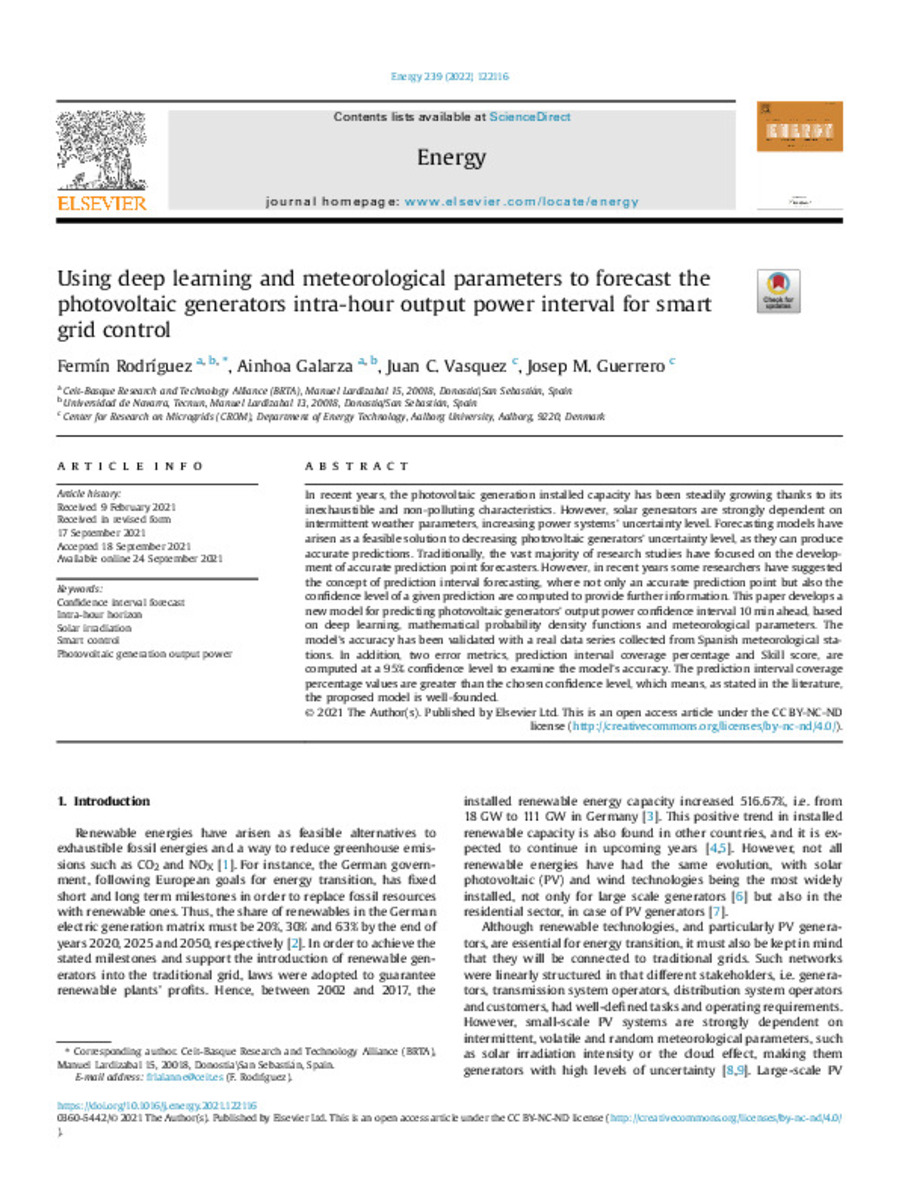Using deep learning and meteorological parameters to forecast the photovoltaic generators intra-hour output power interval for smart grid control
Keywords:
Confidence interval forecast
Intra-hour horizon
Solar irradiation
Smart control
Photovoltaic generation output power
Note:
This is an open access article under the CC BY-NC-ND
Citation:
Rodríguez, F. (Fermín); Galarza-Rodríguez, A. (Ainhoa); Vasquez, J.C. (Juan C); et al. "Using deep learning and meteorological parameters to forecast the photovoltaic generators intra-hour output power interval for smart grid control". Energy. (239), 2022, 122116
Statistics and impact
0 citas en

0 citas en

Items in Dadun are protected by copyright, with all rights reserved, unless otherwise indicated.







